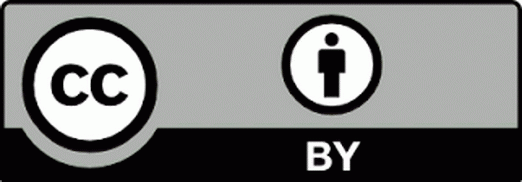- Информация о материале
- Категория: 13.00.00 Педагогические науки
- Просмотров: 852
Matnazarova M.B.
Email: Адрес электронной почты защищен от спам-ботов. Для просмотра адреса в вашем браузере должен быть включен Javascript.
Matnazarova Mekhribon Bakhtiyarovna - Doctoral Student, HEAD SCIENTIFIC AND METHODOLOGICAL CENTER, TASHKENT, REPUBLIC OF UZBEKISTAN
Abstract: this article examines the conditions for the continuous development of professional competence of modern pedagogical staff of higher educational institutions, which influence development processes through internal conditions, and it depends on them that it is important for him from the external environment and becomes a factor of its activity. The teacher should streamline the objective conditions - family educational influences, values, social norms of the group in order to control the individual in solving her problems, in which overcoming the difficulties would give the student positive emotions to enhance successful activities, as well as to form the source of new needs and interests.
Keywords: professional competence, professional activities, training, development, personality, subjective relationships, higher education, educational institutions, modern technology.
Матназарова М.Б.
Матназарова Мехрибон Бахтияровна – докторант, Головной научно-методический центр, г. Ташкент, Республика Узбекистан
Аннотация: данная статья рассматривает условия непрерывного развития профессиональной компетентности современных педагогических кадров высших образовательных учреждений, которая влияют на процессы развития через внутренние условия, и именно от них зависит, что именно из внешней среды является для него значимым и становится фактором его активности. Педагог должен упорядочить объективные условия - семейные воспитательные влияния, ценности, социальные нормы группы, чтобы управлять личностью в решении её проблем, при котором преодоление трудностей порождало бы у обучаемого положительные эмоции для усиления успешной деятельности, а также для формирования источника новых потребностей, и интересов.
Ключевые слова: профессиональная компетентность, профессиональная деятельность, обучения, развития, личность, субъективные отношения, высшая школа, образовательные учреждения, современные технологии.
Список литературы / References
- Исмадияров Я.У. Practical mechanisms for training of education managers for innovation and evaluation of their effectiveness. European Journal of Research and Reflection in Educational Sciences Great Britain, 2017. Vol. 5. № 3, ISSN 2056-5852 Р. 52-59 (13.00.00 № 3).
- Исмадияров Я.У. Content and Formation Key Competencies of Quality Assurance Managers. Eastern European Scientific Journal Düsseldorf -Germany 2017, ISSN 2199-7977 DOI 10.12851/EESJ2017032017 AURIS. Раge 87-93 (13.00.00 № 1).
- Азизходжаева Н.Н. Педагогические технологии и педагогическое мастерство / [Электронный ресурс]. Режим доступа: http://nashol.com/2016121492149/pedagogicheskie-tehnologii-i-pedagogicheskoe-masterstvo-azizhodjaeva-n-n-2005.html/ (дата обращения: 06.12.2018).
- Багдасарова С.К. Психология и педагогика: учеб. пособие для ср. спец. учеб. заведений / С.К. Багдасарова, С.Н. Самыгин, Л.Д. Столяренко. М.: Ростов: МарТ, 2006. C. 315.
- Сорочан Т.М. Модель профессионального развития педагогических работников в последипломном педагогическом образовании регионального уровня / Т.Н. Сорочан // Путь образования, 2008. № 2 (48). С. 11-15.
- БодровВ.А. Психология профессиональной пригодности: Учеб. пособие для вузов. М.: ПЕР СЭ, 2001. C. 511.
- Юртаева А. Коллективные формы методической работы и их влияние на развитие профессионально-педагогической компетентности / А. Юртаева // Сб. наук. работ Бердянского педагогического университета (Пед. науки). Бердянск, 2010. № 2. С. 267–271.
Ссылка для цитирования данной статьи
 |
Тип лицензии на данную статью – CC BY 4.0. Это значит, что Вы можете свободно цитировать данную статью на любом носителе и в любом формате при указании авторства. | |
|
Полная ссылка для цитирования на русском языке. Матназарова М.Б. ПУТИ И УСЛОВИЯ НЕПРЕРЫВНОГО РАЗВИТИЯ ПРОФЕССИОНАЛЬНОЙ КОМПЕТЕНТНОСТИ СОВРЕМЕННЫХ ПЕДАГОГИЧЕСКИХ КАДРОВ ВЫСШИХ ОБРАЗОВАТЕЛЬНЫХ УЧРЕЖДЕНИЙ // European research № 12 (47) / Сб. ст. по мат. «European Research: Innovation in Science, Education and Technology/Европейские научные исследования: инновации в науке, образовании и технологиях»: ХLVII межд. науч.-практ. конф. (Лондон. Великобритания. 07 декабря, 2018). С. {см. сборник}. Краткая ссылка для цитирования на русском языке. Матназарова М.Б. ПУТИ И УСЛОВИЯ НЕПРЕРЫВНОГО РАЗВИТИЯ ПРОФЕССИОНАЛЬНОЙ КОМПЕТЕНТНОСТИ СОВРЕМЕННЫХ ПЕДАГОГИЧЕСКИХ КАДРОВ ВЫСШИХ ОБРАЗОВАТЕЛЬНЫХ УЧРЕЖДЕНИЙ // European research № 12 (47). 2018. С. {см. сборник}. |
||
- Информация о материале
- Категория: 13.00.00 Педагогические науки
- Просмотров: 512
Kurbonova M.I., Erkinova Kh.D., Shokhobitdinov Kh.H.
Email: Адрес электронной почты защищен от спам-ботов. Для просмотра адреса в вашем браузере должен быть включен Javascript.
Kurbonova Mavluda Ibaidullaevna - Senior Lecturer,
DEPARTMENT OF PEDAGOGY;
Erkinova Khayitkhon Doniyerbek kizi – Student;
Shokhobitdinov Khayotbek Hakimjon ugli - Student,
DIRECTIONS FINE ARTS AND ENGINEERING GRAPHICS,
ANDIJAN STATE UNIVERSITY, ANDIJAN, REPUBLIC OF UZBEKISTAN
Abstract: the author views the questions of evolution of modern pedagogical education, determines the features and prospects of its functioning in modern society, finds out the possible directions of the content planning of future teachers professional training. The methodological basis for designing an adaptive teacher training system at a higher education institution is the trend towards the actualization of personality-oriented education developed in modern science.
Keywords: teacher, pedagogical education, pedagogical competence, professional training.
Курбонова М.И., Эркинова Х.Д., Шохобитдинов Х.Х.
Курбонова Мавлуда Ибайдуллаевна – старший преподаватель,
кафедра педагогики;
Эркинова Хайитхон Дониёрбек кизи – студент;
Шохобитдинов Хаётбек Хакимжон угли – студент,
направления изобразительное искусство и инженерная графика,
Андижанский государственный университет,
г. Андижан, Республика Узбекистан
Аннотация: в данной статье рассмотрены вопросы развития современного педагогического образования, определяются особенности и перспективы его функционирования в современном обществе, выстраиваются возможные направления проектирования содержания профессиональной подготовки будущих педагогов. Методологическим основанием проектирования адаптивной системы профессиональной подготовки педагога в вузе становится тенденция актуализации личностно-ориентированного образования, разрабатываемого в современной науке.
Ключевые слова: педагог, педагогическое образование, компетентность, тенденция, профессиональная подготовка, проектирования.
Список литературы / References
- Новиков А.М., Новиков Д.А. Методология. М.:СИНТЕГ, 2007. С. 668.
Ссылка для цитирования данной статьи
 |
Тип лицензии на данную статью – CC BY 4.0. Это значит, что Вы можете свободно цитировать данную статью на любом носителе и в любом формате при указании авторства. | |
|
Полная ссылка для цитирования на русском языке. Курбонова М.И., Эркинова Х.Д., Шохобитдинов Х.Х. СОВРЕМЕННОЕ ПЕДАГОГИЧЕСКОЕ ОБРАЗОВАНИЕ: ТЕНДЕНЦИИ И ПЕРСПЕКТИВЫ РАЗВИТИЯ // European research № 12 (47) / Сб. ст. по мат. «European Research: Innovation in Science, Education and Technology/Европейские научные исследования: инновации в науке, образовании и технологиях»: ХLVII межд. науч.-практ. конф. (Лондон. Великобритания. 07 декабря, 2018). С. {см. сборник}. Краткая ссылка для цитирования на русском языке. Курбонова М.И., Эркинова Х.Д., Шохобитдинов Х.Х. СОВРЕМЕННОЕ ПЕДАГОГИЧЕСКОЕ ОБРАЗОВАНИЕ: ТЕНДЕНЦИИ И ПЕРСПЕКТИВЫ РАЗВИТИЯ // European research № 12 (47). 2018. С. {см. сборник}. |
||




